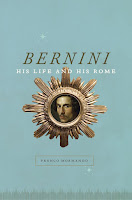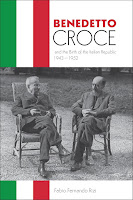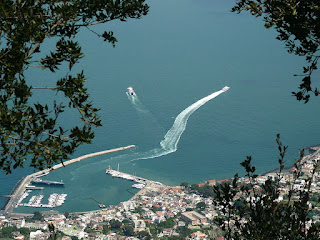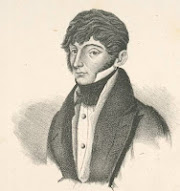Pope Urban VIII
Pontiff whose extravagance led to disgrace
The controversial Pope Urban VIII died on this day in 1644 in Rome. Urban VIII – born Maffeo Barberini – was a significant patron of the arts, the sponsor of the brilliant sculptor and architect Gian Lorenzo Bernini, whose work had a major influence on the look of Rome. But in his ambitions to strengthen and expand the Papal States, he overreached himself in a disastrous war against Odoardo Farnese, the Duke of Parma, and the expenses incurred in that and other conflicts, combined with extravagant spending on himself and his family, left the papacy seriously weakened. Indeed, so unpopular was Urban VIII that after news spread of his death there was rioting in Rome and a bust of him on Capitoline Hill was destroyed by an angry mob. Urban VIII is also remembered for the conviction for heresy of the physicist and astronomer Galileo Galilei. Read more…
_____________________________________
Teresa Noce - activist and partisan
Anti-Fascist who became union leader and parliamentary deputy
Teresa Noce, who became one of the most important female campaigners for workers’ rights in 20th century Italy, was born on this day in 1900. A trade union activist as young as 12 years old, Noce spent almost 20 years in exile after the Fascists outlawed her political activity, during which time she became involved with the labour movement and in Paris and subsequently led a French partisan unit under the code name Estella. After she returned to Italy in 1945 she was elected to the Camera dei Deputati (Chamber of Deputies) as a member of the Italian Communist Party (PCI). Working with the Unione Donne Italiane (Italian Women’s Union), she secured changes to the law to protect working mothers and provide paid maternity leave. Born in one of the poorest districts of Turin, she and her older brother were brought up in a one-parent family. Read more…
______________________________________
Benito Mussolini - Fascist leader
Future dictator inspired by his father's politics
Benito Mussolini, who would become Italy's notorious Fascist dictator during the 1920s, was born on this day in 1883 in a small town in Emilia-Romagna known then as Dovia di Predappio, about 17km (11 miles) south of the city of Forlì. His father, Alessandro, worked as a blacksmith while his mother, Rosa was a devout Catholic schoolteacher. It could be said that Alessandro's political leanings influenced his son from birth. Benito was named after the Mexican reformist President, Benito Juárez, while his middle names - Andrea and Amilcare - were those of the Italian socialists Andrea Costa and Amilcare Cipriani. As a boy growing up, Mussolini would listen to Alessandro's admiration for the protagonists of the Italian unification movement, such as the nationalist Giuseppe Mazzini, and the military leader Giuseppe Garibaldi. Read more…
Agostino Depretis – politician
Premier stayed in power by creating coalitions
One of the longest serving prime ministers in the history of Italy, Agostino Depretis died on this day in 1887 in Stradella in the Lombardy region. He had been the founder and main proponent of trasformismo, a method of making a flexible centrist coalition that isolated the extremists on the right and the left. Depretis served as Prime Minister three times between 1876 and his death. He was born in 1813 in Mezzana Corti, a hamlet that is now part of Cava Manara, a municipality in the province of Pavia. After graduating from law school in Pavia, Depretis ran his family’s estate. In 1848, the year of revolutions in Europe, he was elected as a member of the first parliament in Piedmont. He consistently opposed Camillo Benso, Count of Cavour, the Prime Minister of Piedmont Sardinia and was a disciple of the pro-unification activist Giuseppe Mazzini. Read more…
______________________________________
Book of the Day: Bernini: His Life and His Rome, by Franco Mormando
Sculptor, architect, painter, playwright, and scenographer, Gian Lorenzo Bernini was the last of the great universal artistic geniuses of early modern Italy, placed by both contemporaries and posterity in the same exalted company as Leonardo, Raphael and Michelangelo. His artistic vision remains palpably present today, through the countless statues, fountains, and buildings that transformed Rome into the Baroque theatre that continues to enthrall tourists today. It is perhaps not surprising that this artist who defined the Baroque should have a personal life that itself was, well, baroque. As Bernini: His Life and His Rome reveals, Bernini was a man driven by many passions, possessed of an explosive temper and a hearty sex drive, and he lived a life as dramatic as any of his creations. Drawing on archival sources, letters, diaries, and - with a suitable scepticism - a hagiographic account written by Bernini’s son, Mormando leads us through Bernini’s many feuds and love affairs, scandals and sins and sets his life against a vivid backdrop of Baroque Rome, bustling and wealthy, and peopled by churchmen and bureaucrats, popes and politicians, schemes and secrets.Franco Mormando is associate professor of Italian at Boston College and the author of several books.
.jpg)

.jpg)


.jpg)
.jpg)
.jpg)




_-_n._8180_-_Casamicciola_-_Piccola_Sentinella.png)






.jpg)
.jpg)
